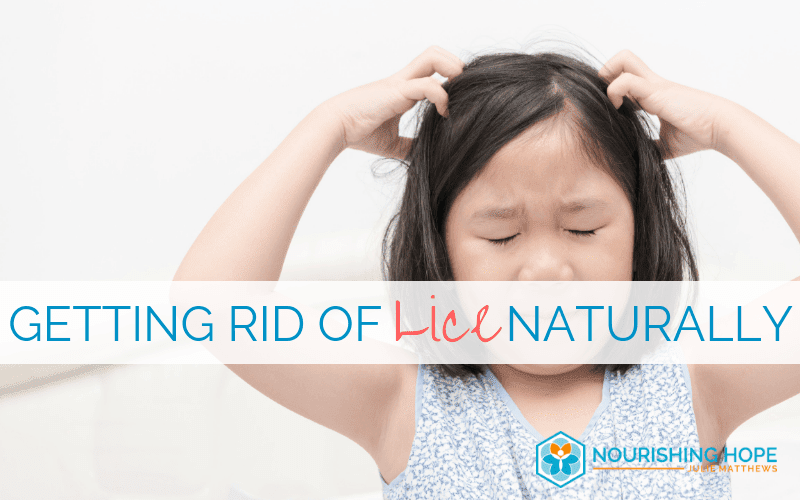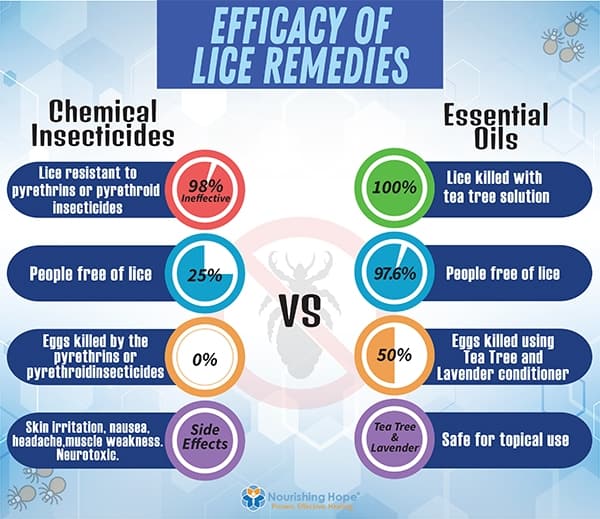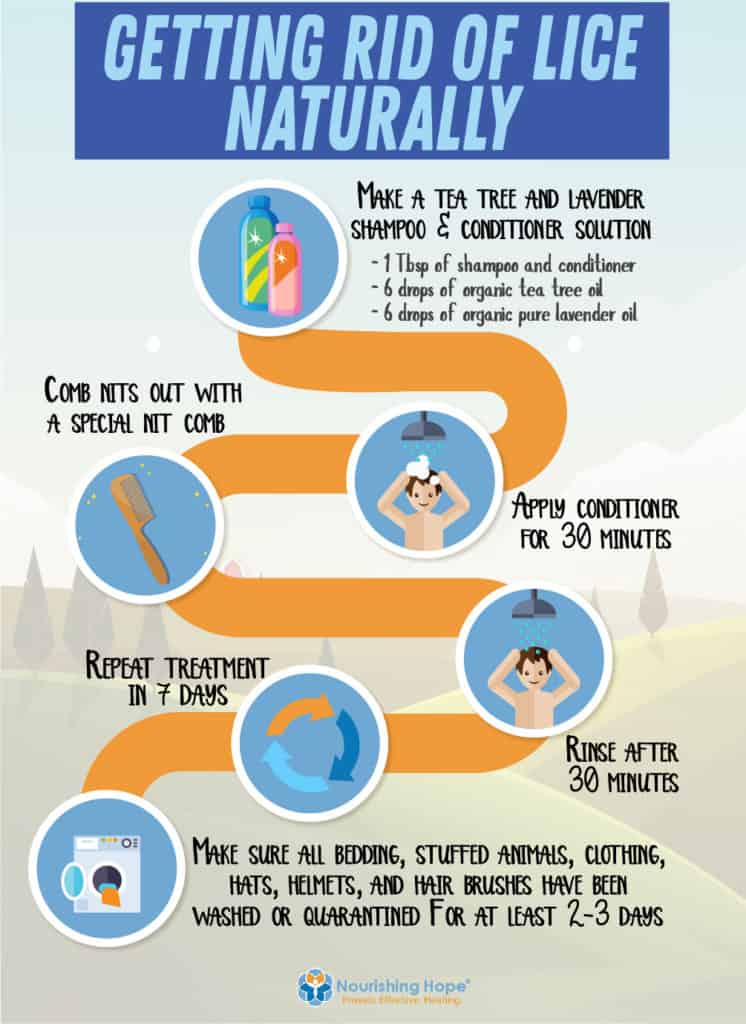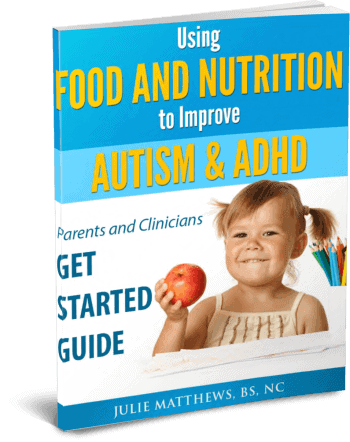
Lice. Just saying the word creates that deeply squeamish itchy feeling. With lice season now upon us, you may find it helpful to review the main issues and solutions involved in getting rid of these unwanted parasitic insects. With any health concern, prevention is very much worth the effort, and if you’ve been through the lice protocol before, you know what I mean.
When my daughter came home with lice a couple years ago, I got it as well. So I know firsthand, how stressful and overwhelming it can feel. Honestly, I broke down crying in the salon chair – overwhelmed at how we were doing to get rid of it all from our heads and our environment.
My daughter and I both have very long, thick hair, and having lice for the first time was a nightmare.
Getting rid of them was not the only pain, as I have to say the itching continued for 2 weeks afterwards.
And while I can try to comb out my daughters hair, as the mom, it is very difficult to comb nits out of your own hair yourself.
So, needless to say, we are all about prevention now!
And we know more now about getting rid of lice than we ever wanted to know. And I want to share it with you so maybe you can be a little less stress and overwhelmed than I was.
So whether it’s about preventing or getting rid of lice, keep reading.
As a mom and a nutritionist I had a preference to avoid all chemicals and toxins as much as possible. The idea of using a conventional chemical insecticide lice treatment was the last thing I wanted to do. Fortunately, it turns out that the natural lice options show to be more effective than the toxic chemical ones.
So I took my nutrition research hat and began looking to natural remedies to get rid of lice.
Here’s our journey along with the research and strategies I discovered along the way.
Signs and Symptoms
Symptoms – Itching
If you notice itching on the head, necks and ears, you may want to check for lice.
However, not everyone who gets lice will have itching, so don’t rely on itching as your only clue or you might find you’ve had lice for a while and didn’t know it.
Lice thrive on human heads and necks as they attach to hair shafts and feed off blood at the scalp. Itching can be mild or intense and it is caused by an allergic reaction to lice saliva which transmits when they bite. We are all allergic to this substance. (Lucky me… Seems I may be more allergic than some).
As yucky as they are, you can take some comfort in knowing that they do not create bacterial or viral infections themselves and they are not caused by poor hygiene. However, repeated scratching can cause a secondary infection by breaking the skin due to scratching.
Let’s get started by defining lice terms:
How do you check for lice?
Itching is a sign, but you may notice dandruff looking flakes which can be lice. Use a special fine tooth “nit” comb to remove the lice and eggs from the hair and see them easily. Live head lice is about the size of a sesame seed. The eggs (nits) are yellowish white and stick to hairs near the scalp, but the tiny nit comb can extract them.
If you do find lice, it is critical to address lice for everyone in the house, as lice is easily spread to others within a close area. Lice do not fly or jump, but they can easily transfer when sharing hair brushes, hats, clothes, as well as pillows and beds, and living in the same house, gives many chances for lice to attach to anyone. They do not live in any other body hair other than the head, not eyebrows or beards, etc.
Toxic and Non-Toxic Lice Remedies

Chemical Lice Insecticides
The details below demonstrate that chemical treatments have negative side effects and they do not effectively eradicate lice. Most lice today are resistant to the chemical insecticides we have been using for decades, and 98% of these “super lice” are not killed by conventional treatment [1].
Most over-the-counter products contain pyrethrins or pyrethroids (like permethrin) or other chemicals, which are insecticides (used in gardens) that are known neurotoxins. Neurotoxins mean they are toxic to the nervous system, and this is the mechanism by which they kill the insect. Other chemicals used for lice may include ovide which contains an even stronger neurotoxin, malathion, which has been banned in some areas. Lindane is known to cause cancer but is still available [2] .
Details From LiceRanger.com regarding Permethrin, a pyrethroid, explains that “Permethrin kills lice by affecting the nervous system, causing muscle spasms, paralysis, and then death. The bottle itself has many urgent warnings on it including that if inhaled the spray could cause a person to stop breathing. Although sprays with this ingredient suggest that you to spray them all over the bedding and home, the bottle warns that if the spray comes in contact with clothing or skin that the clothing should be removed immediately and the skin should be rinsed for 15 minutes.”
Side effects of permethrin include skin irritation and burning. Excessive exposure can cause nausea, headache, muscle weakness, shortness of breath and seizures. Permethrin is classified by the EPA as a likely carcinogen. It is highly toxic to aquatic organisms and should not be disposed of in bodies of water.
Not only do these chemicals have toxic effects, they have been tested and shown to not offer much relief because most lice are now resistant to these chemicals [3]. In part because of this resistance these chemical-based approaches show very low effectiveness. In one study with the insecticides, pyrethrins and piperonyl but oxide, only 10 of the 40 people were lice free – that means only 25% of those who used the toxic medications were successful.[4]
While researching these toxic treatment methods, we found that many sources stated, “The benefit is greater than the risk of side effects”. It is true we don’t want lice, and need to get rid of it. However, we can do so without toxic chemicals and be much more effective it turns out. Essential oils do fantastic at killing lice, and eggs, and do not cause us any harm.
Natural, Non-Toxic Alternatives
Tea Tree and Lavender essential oils have been used in studies and been found to be very effective. In fact, far more effective than conventional remedies, showing in some studies that up to 100% of lice are killed.
According to the research, a 1% solution of tea tree kills 100% of the lice and 50% of the eggs/nits. This compares to the neurotoxic insecticide treatments that are less effective on eggs.
In another study of people using a tea tree and lavender solution, 97.6% were lice-free after two applications of the essential oil solution compared with only 25% of people being lice-free after two applications of pyrethrins and piperonyl butoxide.
There are other essential oil studies showing good efficacy such as Australian eucalyptus oil and Leptospermum petersonii, with 100% of lice killed after a single application, and 83% of people being lice-free after the three applications, compared with 36% lice-free with the “neurotoxic treatment” as they describe it.[4] Since not everyone has access to the botanical Leptospermum petersonii, I’ve focused my article on tea tree and lavender.
| Chemical insecticides | Tea tree and lavender essential oils |
| 98% of lice resistant to pyrethrins or pyrethroid insecticides [1] | 100% [5] of lice are killed at 1% tea tree solution |
| 25% [6] of people were free of lice after pyrethrins and piperonyl butoxide | 97.6% [6] of people were free of lice after tea tree and lavender |
| Permethrin is pediculicidal (i.e., it kills only live lice); it is not ovoidal (i.e., it does not kill nits at every stage [7][12] | 50% of eggs [5] are killed a 1% Tea Tree solution |
| Neurotoxic. Skin irritation and burning. Nausea, headache, muscle weakness, shortness of breath and seizures. Likely carcinogen.
Lindane is a neurotoxin that interferes with GABA neurotransmitter function. In humans, lindane affects the nervous system, liver, and kidneys, and may well be a carcinogen[15][16]. |
Tea Tree and lavender are considered safe for topical use. [8][9] |
** Note – Pyrethrum (“pie-wreath-rum”) is an insecticide made from certain species of the chrysanthemum. It is a mixture of several different compounds called pyrethrins and cinerins. It is now extracted with solvents but is still widely used in household insect sprays where it is usually combined with another chemical called piperonyl butoxide (PBO). Permethrin (“per-meth-rin”), on the other hand, is in the “pyrethroid” family, a synthetic, man-made insecticide.
Used topically, tea tree and lavender are considered both safe and effective:
Safety: A 2006 review of the toxicity of tea tree oil concluded that it may be used externally in its diluted form by the majority of individuals without adverse effect (provided oxidation is avoided).[8] **Note: Tea Tree is toxic if ingested, it is only to be used topically.
Safety: Topical use of diluted lavender oil is generally considered safe for most adults, but reports suggest it can cause skin irritation.[9]
How do you get rid of lice naturally?
 Essential oil shampoo and conditioner solutions are very effective for eradicating lice.
Essential oil shampoo and conditioner solutions are very effective for eradicating lice.
Note: While many shampoos and conditioners have tea tree or lavender oil in them, they are unlikely to have a high enough concentration to be effective.
But you can make your own very easily.
Essential Oil Remedy for Lice
Use Organic pure essential oils as these oils sit on the head. Look for “steam-distilled” tea tree oil from the Melaleuca alternifolia tree. Use a shampoo or conditioner that is as natural as possible, with no chemicals like parabens and sulfates, since it too will be sitting on your head for 30 minutes and we absorb through our skin. This is not the time to go with a cheap shampoo/conditioner.
This recipe can be used to make shampoo or conditioner. There is a 1 Tablespoon recipe for 1 or 2 times and a ½ Cup recipe for more than 2 uses.
Tablespoon Recipe
1 Tbsp of shampoo or conditioner
6 drops of organic tea tree essential oil*
6 drops of organic pure lavender essential oil*
*creates 2% solution
Half cup recipe
You can make ½ cup of conditioner or shampoo. This is especially helpful for conditioner, as you need much more conditioner to “saturate” all of your hair compared to shampoo. You can use about 1 Tablespoon of shampoo, but might need ¼ cup of conditioner.
1/2 Cup Conditioner/Shampoo
48 drops of each Tea Tree and Pure Lavender essential oils*
*creates 2% solution
Some people add a few drops of olive oil or coconut oil to suffocate the lice.[6] Research is mixed on whether attempting to suffocate lice kills them. So while it can’t hurt, I personally I don’t add this.
But what I do instead is attempt to suffocate them with the conditioner[13][14]. I know the essential oils kills them so it’s possibly not needed to suffocate them. I need to leave in the essential oils on for 30 minutes anyway, so if I’m more concerned about a lice infestation, I will do the conditioner (instead of shampoo) and comb them out after.
How to use the homemade solution and how it works
Apply shampoo or conditioner solution and allow to sit for 30 minutes. In the case of shampoo, just shampoo it in and leave it for 30 minutes. For conditioner, apply a generous amount to damp hair and leave it for 30 minutes. Do not do both processes. Choose one. Below I share more information on which I like to do depending on the situation.
It could be very helpful to use a disposable shower cap during those 30 minutes. One study states “It is likely, that the use of a shower cap to trap volatile components of essential oils such as melaleuca oil which contributes to the higher efficacy of these products compared to the same products applied without a shower cap. The use of a shower cap with essential oil products, however, also appears to be correlated to a higher incidence of transient mild to moderate stinging sensations, burning sensations, and erythema. The sensitivity of the skin of children varies”.[6]
If there is any burning or irritating sensation, rinse it out. Any scrapes on the scalp can get irritated from the mixture, so be careful that there are no scratches. Be careful not to make any scratches when using the nit comb.
Rinse solution out after 30 minutes, unless you plan to comb the nits out, in which case you’ll want to comb first before rinsing. Keep reading for that process.
Reapplication
The remaining 50% of eggs not killed by the tea tree and lavender solution will, in theory, hatch within 8 to 9 days[10]. This is why a second application around 7 days later is important.
For those eggs not killed the first time, some will hatch between day 7 and day 14 (during the 2nd application). Since It takes 9 to 12 days for these baby nymph to become an adult that can lay eggs[10], this 2nd application should kill off 100% of the newly hatched lice before they are mature enough to lay new eggs. This means there should not be any remaining or newly hatched eggs, after this 2nd application.
Some studies did two applications 7 days apart, and others did three applications 7 days apart. Both were effective. When in doubt, I like to do a third. Better safe than sorry.
Combing the Nits out
If you are trying to get a handle on a big infestation or are squeamish of the idea that those eggs will hatch, try combing as well.
It’s important to note that none of the medications or oils used will kill 100% of the eggs [11].
The only way to get ALL the eggs is to physically comb them out with a proper nit comb and doing that with the conditioner still in your hair as that helps to extract the eggs.
To comb the eggs out, after the conditioner has been on the hair for 30 minutes (before rinsing), use a nit comb, in small sections, starting at the scalp. Comb hair with nit comb in all four directions. Start at the very base of the hair and comb all the way out in sections. This is the only way to ensure all the eggs are gone.
After each hair section, wipe the comb on a paper towel to scrape nits off the comb and then toss the paper towel when done.
The challenge is combing the nits is very time consuming. It can take an hour or two to really do a thorough combing job as it takes attention to detail. Moms often can’t do their own hair very well so you need another person that can get in the right position to fully comb properly.
Some salons will comb it out for you. Find one that doesn’t use toxic lice products and just relies on physically removing them with a nit comb. This can be very expensive. When my daughter and I got lice, we both had two appointments at 2 hours each and it cost almost $500.
Hence the reason I went on this journey for a safe and natural solution!
And, I can do this at home for little cost.
When done combing, rinse hair well!
Repeat with your homemade lice shampoo everyday for 7 days to ensure the adults are killed and do not lay more eggs until lice season is over.
How to keep them away once you’ve had them?
Keep in mind that lice will die within 24-48 hours once it is off of a host [10], and eggs can’t survive off the host, so there is a light at the end of the tunnel.
So to avoid re-contamination from items such as sheets, pillows, towels, clothes, brushes, hats, scarves, hair accessories, and stuffed animals, you will want to quarantine them for 48 hours.
Brushes need to be cleaned out with all hair removed and then placed in a ziplock bag for 2 full days. Stuffed animals and hats should be placed in a large bag and sealed to quarantine. Upholstered furniture, car seats and pillows that can’t be washed should be vacuumed (or removed from use for 2 full days). I also place a sheet over mine for extra protection.
I wash everything I can that has been in possible contact with lice by using hot soapy water and a hot drier to disinfect. There is some question of whether washing and drying can kill lice, so it’s best to quarantine them as well just to be sure. But the truth is for things like a comforter, I don’t have extra lying around to replace those that have been quarantined for days, so I might wash them and dry them in a hot drying, and turn them inside out or upside down or some way of doing my best to try and prevent re-exposure.
Vacuum all floors, especially under beds and mattresses as well as furniture, to capture any lice that have fallen off a person.
Short hair doesn’t mean you can’t get lice. Lice only need about ½ of an inch of hair as they attach ¼ of an inch away from the scalp. Shaving your head if you have lice is not the best answer either and is quite drastic.
For prevention
I typically just use the shampoo. It’s less time consuming and is quite effective on it’s own. Lather, paying extra attention on the scalp area where the lice live, often around the hairline. Leave it on for 30 minutes, so it can do it’s work. It can be helpful to put a disposable shower cap on. After 30 minutes, work the shampoo in again and then rinse well. I do it up to once a week when it’s active lice season, which for us seems in the fall and winter, when school starts up.
I’ve heard braiding hair can be helpful to reduce transmission. Think big dust mop vs. braid. There are sprays you can buy with tea tree and other essential oils that attempt to repel lice. I braid my daughter’s hair and then apply essential oil spray.
It can seem overwhelming and impossible to get rid of, but it’s not that overwhelming if you follow the science and these simple steps.
I’m not a lice expert/professional, in this case, I’m just a mom that wanted to put together the best solution I could for my family based on what the science says. I hope you find this helpful.
Let us know your experience with lice and if you find this remedy helpful.






Hi! When you say “ Repeat with your homemade lice shampoo everyday for 7 days to ensure the adults are killed and do not lay more eggs until lice season is over.” is this instead of doing the conditioner every 7 days?
Hi Julie
I have had great success using an electric RobiComb designed for lice.
Please let your safer know about this cheap tool!
Ruth